If you’ve been thinking 5G seems more complicated than the cellular technologies that came before, you’re not entirely wrong. 5G promises faster performance, better coverage, and ubiquitous connectivity to power the next generation of autonomous cars and smart devices. To accomplish this, it needs to push the boundaries of what was possible with older cellular technologies.
This also requires 5G to operate across a much wider range of frequencies. After all, we’re talking about a technology that has the potential to replace wired broadband connections and even many traditional Wi-Fi networks. In the future, a 5G network won’t be something you merely fall back on when a better connection isn’t available — it may very well be the best connection you can get.
So, what frequency does a 5G network operate on? There’s no single straightforward answer to that, but it’s also not as complicated as it appears at first glance. 5G networks use many different frequencies, but these can all be grouped into three specific ranges, each with its own pros and cons.
The speed and range trade-off
Before we discuss the frequency ranges used by 5G, it’s essential to understand why so many different frequencies are needed. The answer to that question is something you may have already experienced in your own home.
Modern Wi-Fi routers operate on two frequencies: 2.4GHz and 5GHz. If you’ve ever tried to get the best Wi-Fi coverage in your home, you’ve probably encountered a fundamental reality of how radio waves work. You’ll get slower speeds when connected to your 2.4GHz network, but you can also stay connected even when you stray farther away from the router. On the other hand, the 5GHz channel gives you much better performance, but you may not make it to the other end of your house.
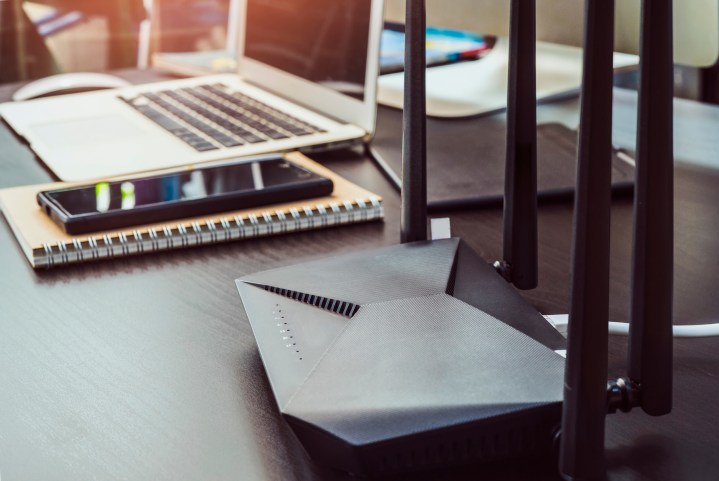
While these naturally have a much shorter range than cellular radio towers, the same principles apply. Higher frequencies can carry more data but don’t travel as far and don’t penetrate solid objects nearly as well. Lower frequencies go much farther and are less prone to interference, but they’re also much slower.
Mobile network operators need to consider these same tradeoffs when building their 5G networks. The highest-frequency 5G signals can provide insanely fast wireless speeds but can’t cover much more than a city block. At the other end of the spectrum, low-frequency signals can go for miles but don’t offer performance that’s noticeably better than older 4G/LTE technologies.
Sub-6 versus mmWave
When 5G was rolling out, the industry divided the frequencies into two generally broad ranges: Sub-6GHz (Sub-6) and millimeter wave (mmWave).
As the name implies, the Sub-6 frequencies were intended to include all those below 6GHz, while the 5G mmWave spectrum started at around 24GHz and went up from there.
In practical terms, early Sub-6 5G rollouts stayed mainly below the 2GHz range. Since these frequencies were already used by 4G/LTE and even older 3G networks, carriers already had the necessary licenses to use them. This made it easy to quickly roll out 5G on top of their existing networks, and that’s precisely what T-Mobile and AT&T did.
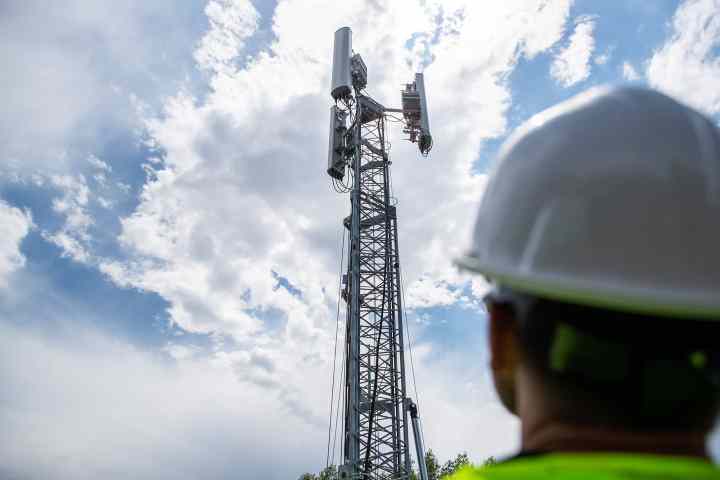
Specifically, AT&T and T-Mobile set up their 5G networks on the same 850MHz and 1.9GHz (1900MHz) frequencies used by the earliest “2G” GSM networks and the 700MHz and 1.7GHz (1700MHz) frequencies that came into use with the 3G and LTE rollouts. AT&T also ran some 5G services in the 2.3GHz range, while T-Mobile went down to 600MHz to get even better coverage for its “nationwide” 5G network.
Meanwhile, Verizon decided to go in the opposite direction with its initial 5G rollout, using the much faster 28GHz mmWave frequency. This allowed Verizon to boast the fastest speeds; a 2020 OpenSignal report had Verizon well in the lead globally, with average download speeds of 506Mbps since it had no Sub-6 5G networks to pull down its score. However, the extremely limited range of mmWave frequencies meant fewer than 1% of Verizon customers even saw the company’s 5G network appear on their smartphones.
The challenges of low-band 5G
Low-band 5G let AT&T and T-Mobile get their networks up and running very quickly as they didn’t have to wait for new licenses, plus they could also piggyback on existing 4G infrastructure. However, it’s that latter point that made early 5G performance so underwhelming for many folks.
To make 5G and 4G peacefully coexist on the same frequencies, carriers had to turn to a technology known as Dynamic Spectrum Sharing (DSS). This new 5G capability allowed it to yield the airwaves to older 4G traffic.
The problem with this is that 4G networks know nothing of DSS; 4G hadn’t been taught how to share, so it was always up to 5G traffic to politely step aside whenever 4G traffic showed up. In other words, older and slower 4G signals always got priority over newer and faster 5G.
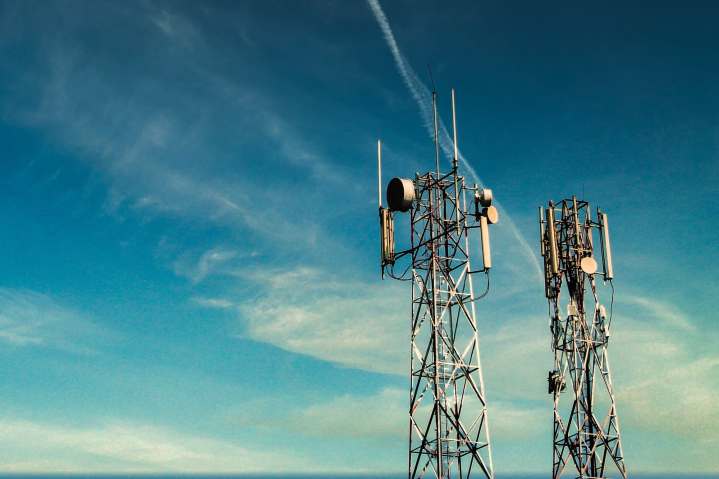
This means that in addition to being hampered by the limited capacity of lower frequencies, low-band 5G networks also had to contend with making way for all the 4G traffic on those airwaves. It’s little wonder that early 5G networks couldn’t deliver speeds that were noticeably faster than 4G.
Even when Verizon finally turned on its low-band Nationwide 5G network in late 2020 to bring 5G to the other 99% of its customers, its 5G performance was so poor that some experts recommended folks switch off 5G on their smartphones to save battery life.
New mid-band spectrum changes the game
Following those initial rollouts, two things happened that showed industry experts may have erred in lumping all sub-6GHz frequencies into a single “Sub-6” category.
Both of these involved the use of a higher frequency mid-band spectrum, although the carriers approached it from two different angles.
Thanks to its 2020 merger with Sprint, T-Mobile had an ace up its sleeve. Sprint had made the unusual choice of running its 4G/LTE network almost exclusively on a swath of 2.5GHz spectrum, well above the range used by the other carriers and older GSM and 3G networks.
However, instead of keeping this older 4G/LTE network around, T-Mobile surgically decommissioned all Sprint’s towers, freeing up that 2.5GHz spectrum to be used exclusively in new 5G rollouts. This gave T-Mobile faster frequencies to play with that wouldn’t be burdened by 4G signals. Hence, 5G traffic had a clear path on those airwaves without the need to employ DSS to yield to older 4G traffic. This became the backbone of T-Mobile’s 5G Ultra Capacity network.
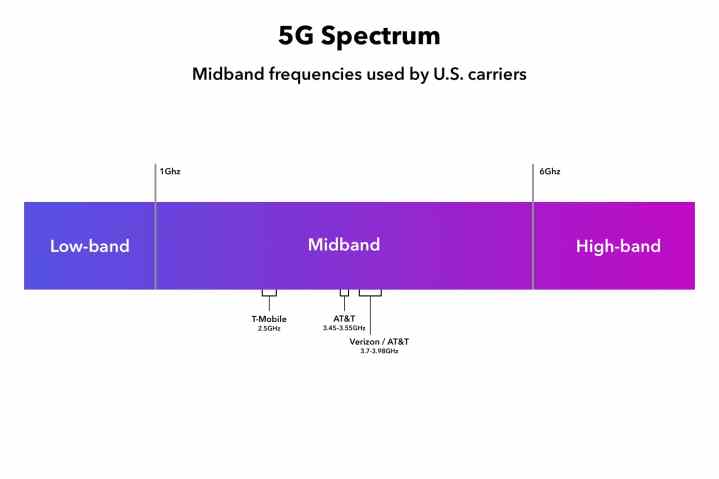
AT&T and Verizon weren’t quite so lucky. While AT&T had some 2.3GHz spectrum, it didn’t have enough to make a difference. Instead, both carriers had to wait until the Federal Communications Commission (FCC) freed up some more spectrum in what’s now known as the C-band range.
An FCC auction in early 2021 saw Verizon drop $45.4 billion to secure as much of this spectrum as it could. AT&T also spent over $23 billion, and even T-Mobile picked up a piece of the pie for $9.3 billion. This gave the carriers the right to run 5G networks on frequencies between 3.7GHz and 3.98GHz.
Both carriers began putting this new spectrum to good use earlier this year, and the higher frequencies are already proving themselves more than capable of delivering the speeds that 5G promised in the first place. While T-Mobile has a head start thanks to its earlier 2.5GHz deployments, Verizon is catching up fast, and AT&T isn’t much further behind.
While these mid-band and C-band frequencies are still well below 6GHz, they’re in an entirely different class from the low-band frequencies that initially defined the Sub-6 range.
Where does mmWave fit in?
Although the mid-range spectrum has distinguished itself as the sweet spot for 5G, offering the best mix of range and performance, there’s still a place for mmWave in 5G rollouts.
Verizon may have made a tactical error by putting all of its eggs in the mmWave basket, but it had the core of a good idea. Only mmWave can provide the reliability and performance needed in densely populated areas.
AT&T and T-Mobile perhaps understood this better. Both rolled out mmWave more strategically, covering places like stadiums, concert halls, airports, and other places where thousands or tens of thousands of people are likely to congregate.
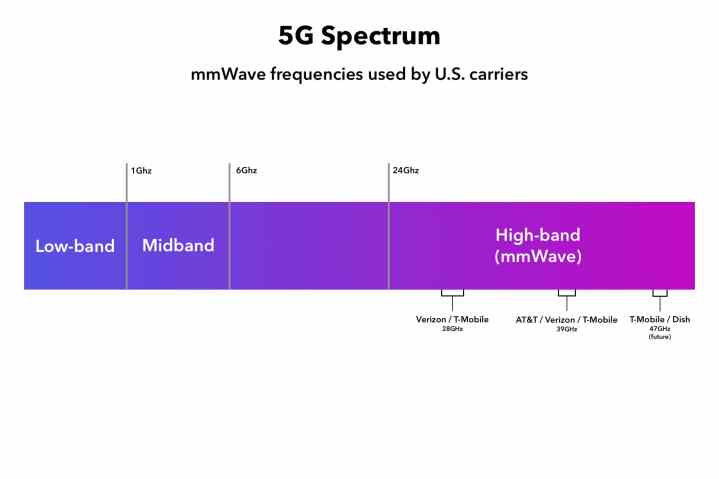
It’s in situations like this where mmWave shines. The higher capacity of the 28GHz and 39GHz frequencies used for 5G mmWave means more bandwidth for many more devices. If you’ve ever been frustrated by poor 4G performance or even a “No Signal” indicator when attending a busy sporting event or concert, you’ll be happy to know that mmWave solves this. By using these higher frequencies, carriers can provide solid 5G performance to thousands of attendees in a stadium without breaking a sweat.
The 5G frequency mix
It’s probably apparent by now that there’s no one perfect frequency for 5G networks to run on. For carriers to deliver on what 5G promises, they have to use a mix of 5G spectrum according to the circumstances.
While C-band and other mid-band frequencies will be the most commonly deployed in urban areas, those are overkill for rural coverage where range is more important than performance.
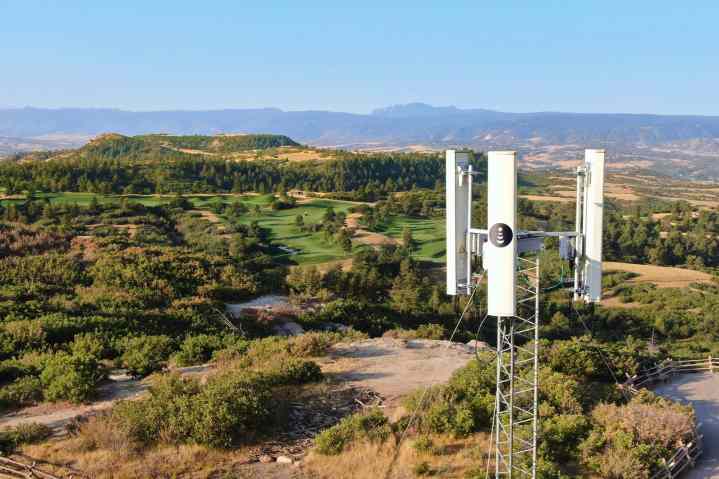
This is why low-band 5G towers will continue to blanket the countryside, and the good news is that as more people move to 5G smartphones and other devices, the amount of 4G traffic on those frequencies will diminish, paving the way for faster 5G speeds even on the lower frequencies.
Meanwhile, carriers will continue to supplement their faster mid-band 5G networks with mmWave transceivers in places like stadiums and airports where extra capacity is needed to support large groups of people. Verizon also has no plans to shut down its original mmWave network already found in many urban downtown areas.
What’s next for 5G spectrum?
These three frequency ranges are just the beginning. Carriers are already vying for new blocks of 5G spectrum, although it will take some time for all the pieces to be put in place.
For instance, a fourth player on the field, Dish, could end up being a dark horse in this race. Rising from the ashes of the T-Mobile/Sprint merger, Dish recently turned on its new Smart 5G network that uses revolutionary new cloud-based technology to make it faster and more affordable to roll out its 5G service across the country.
Dish has been lobbying the FCC to open up the 12GHz band, although it’s currently in a fight over this spectrum with Elon Musk’s SpaceX Starlink service. It’s hard to say how 12GHz will fit into the 5G mix — we’re not even sure what to call it since it lives in the vast gap between Sub-6, which stops at 6GHz, and mmWave, which starts at 24GHz.
However, this 12GHz spectrum could become a new sweet spot, providing even faster speeds without sacrificing nearly as much range as the 28GHz mmWave.
T-Mobile and Dish also collectively own licenses for 99% of the 47GHz spectrum, although it’s not yet clear what either carrier plans to do with that. The FCC also plans to license more mmWave spectrum in the 57-64GHz, 71GHz, 81GHz, and 92GHz ranges.
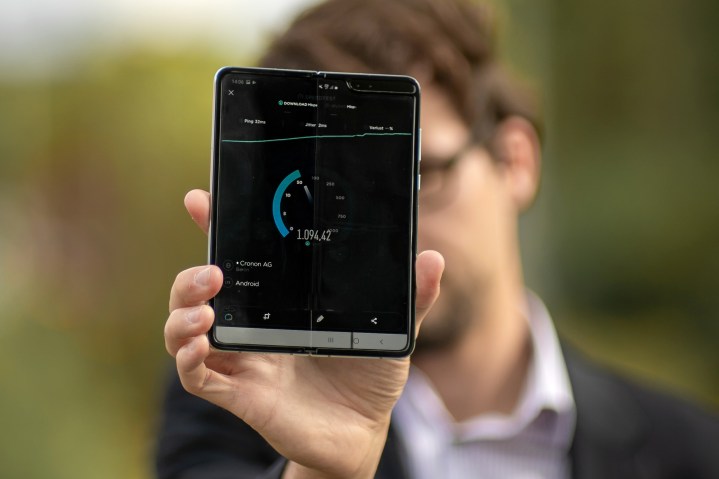
Not every carrier is putting its hopes on this extremely high frequency (EHF) spectrum. T-Mobile has been working on achieving mmWave-like speeds on Sub-6 networks using a new feature known as Carrier Aggregation technology. As the name implies, this ties multiple low-band and mid-band 5G channels together, combining their bandwidth.
However, the biggest obstacle to these new initiatives will be waiting for chip and phone manufacturers to catch up. Qualcomm’s latest Snapdragon X60 offers baseline support for T-Mobile’s Carrier Aggregation strategy, while the newer X65 and X70 improve on that. This means the iPhone 13, Galaxy S21, and more recent models are ready for it. However, the earliest 5G phones like the iPhone 12 and Samsung Galaxy S20 Ultra won’t be able to take advantage of it.
New spectrum is another matter entirely. Carriers can open up whatever spectrum the FCC will allow them to, but smartphones must also be ready to support those frequencies — and most don’t go beyond the standards that have already been widely deployed.
For example, there aren’t any phones on the market yet that support the 12GHz band that Dish is trying to acquire, and since this frequency isn’t used by anybody else, Dish would have to convince a smartphone maker to get on board with it. The same is also true with the higher-frequency 47GHz spectrum.
Nevertheless, there’s a close enough relationship between mobile network operators and hardware manufacturers that if the carriers build it, the smartphone makers will come. The critical point is that these things take time, so while the 5G spectrum will undoubtedly expand in the next few years, it won’t happen overnight.
Editors' Recommendations
- Have an Android phone? You can get unlimited 5G service for free
- How fast is 5G? What you need to know about 5G speeds
- The 5G speed race is over and T-Mobile has won
- Live in a rural area? Verizon 5G is about to get better for you
- T-Mobile’s 5G is still unmatched — but have speeds plateaued?




